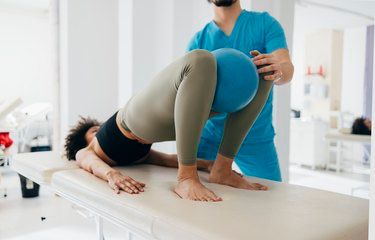Pain in Back of Knee When Straightening Leg

Pain in the back of the knee that persists even after you've stopped moving should be investigated by a physician. It can be caused by many different causes, including a PCL tear or Popliteal cyst. Read on to learn more about PCL injuries and how you can treat them.
Meniscus tears
If you've suffered a meniscus tear in the back of your knee, there are several treatment options to help you get back on your feet as quickly as possible. These include rest, ice therapy, compression, and elevation. Sometimes, your doctor may prescribe corticosteroids to help reduce pain and inflammation. It would be best if you also considered getting physical therapy to regain strength and flexibility in your knee.
Chondromalacia
Chondromalacia is a painful disease of the knee joint that can cause pain in the back of the knee when straightening the leg. The condition can be asymptomatic or chronic. A physical therapist can help you manage your condition. A physical therapist will assess your condition by examining your standing and foot positions and performing a physical examination. They will also check the strength and length of the muscles in the knee joint. If your knee muscles are tight or weak, they may contribute to the pain you experience.
Popliteal cyst
A popliteal cyst is a painful swelling in the back of the knee that makes it difficult to straighten your leg. A large cyst can prevent you from straightening your leg completely. You may also experience redness or warmth down your leg.
Posterior cruciate ligament tear
A posterior cruciate ligament tear is one of the four major ligaments stabilizing the knee. It connects the femur to the tibia and is the strongest ligament in the knee. A tear in this ligament can result in pain, swelling, and limited knee movement. However, if it is not severe, it may heal on its own and attach to other knee structures through scar tissue.
Deep vein thrombosis
Deep vein thrombosis, or DVT, is a condition in which blood clots form in a vein deeper than the surface of the leg. It is common and affects up to 900,000 people in the United States annually. Patients may experience mild pain and redness of the skin in the area of the clot. The skin may also feel warm to the touch. The condition limits blood flow and mobility of the affected leg. While it most often occurs in the leg, it can also develop in arteries in other body parts.
Hamstring tendonitis
When it comes to treating hamstring tendonitis, early rehabilitation is the key. While rest and ice will reduce inflammation and pain, the early stages of rehabilitation should also include physical therapy and strengthening exercises. In severe cases, surgical repair may be required.



